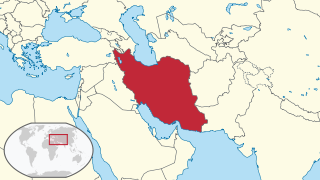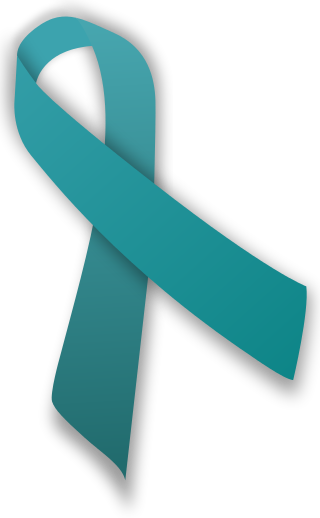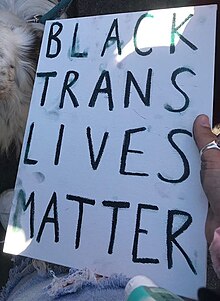
Transphobia consists of negative attitudes, feelings, or actions towards transgender people or transness in general. Transphobia can include fear, aversion, hatred, violence or anger towards people who do not conform to social gender roles. Transphobia is a type of prejudice and discrimination, similar to racism, sexism, or ableism, and it is closely associated with homophobia. Transgender people of color can experience many different forms of discrimination simultaneously.

Violence against transgender people includes emotional, physical, sexual, or verbal violence targeted towards transgender people. The term has also been applied to hate speech directed at transgender people and at depictions of transgender people in the media that reinforce negative stereotypes about them. Trans and non-binary gender adolescents can experience bashing in the form of bullying and harassment. When compared to their cisgender peers, trans and non-binary gender youth are at increased risk for victimisation, which has been shown to increase their risk of substance abuse.

Transgender rights in Iran are limited, with a narrow degree of official recognition of transgender identities by the government, but with trans individuals facing very high levels of discrimination, from the law, the state, and from the wider society.

LGBT stereotypes are stereotypes about lesbian, gay, bisexual and transgender (LGBT) people are based on their sexual orientations, gender identities, or gender expressions. Stereotypical perceptions may be acquired through interactions with parents, teachers, peers and mass media, or, more generally, through a lack of firsthand familiarity, resulting in an increased reliance on generalizations.

Lesbian, gay, bisexual, transgender, intersex, non-binary and otherwise queer, non-cisgender, non-heterosexual citizens of El Salvador face considerable legal and social challenges not experienced by fellow heterosexual, cisgender Salvadorans. While same-sex sexual activity between all genders is legal in the country, same-sex marriage is not recognized; thus, same-sex couples—and households headed by same-sex couples—are not eligible for the same legal benefits provided to heterosexual married couples.

Lesbian, gay, bisexual, transgender and queer (LGBTQ) people face difficulties in prison such as increased vulnerability to sexual assault, other kinds of violence, and trouble accessing necessary medical care. While much of the available data on LGBTQ inmates comes from the United States, Amnesty International maintains records of known incidents internationally in which LGBTQ prisoners and those perceived to be lesbian, gay, bisexual or transgender have suffered torture, ill-treatment and violence at the hands of fellow inmates as well as prison officials.
Various topics in medicine relate particularly to the health of lesbian, gay, bisexual, transgender, queer, intersex and asexual (LGBTQIA) individuals as well as other sexual and gender minorities. According to the US National LGBTQIA+ Health Education Center, these areas include sexual and reproductive health, mental health, substance use disorders, HIV/AIDS, HIV-related cancers, intimate partner violence, issues surrounding marriage and family recognition, breast and cervical cancer, inequities in healthcare and access to care. In medicine, various nomenclature, including variants of the acronym LGBTQIA+, are used as an umbrella term to refer to individuals who are non-heterosexual, non-heteroromantic, or non-cis gendered. Specific groups within this community have their own distinct health concerns, however are often grouped together in research and discussions. This is primarily because these sexual and gender minorities groups share the effects of stigmatization based on their gender identity or expression, and/or sexual orientation or affection orientation. Furthermore, there are subpopulations among LGBTQIA+ groups based on factors such as race, ethnicity, socioeconomic status, geographic location, and age, all of which can impact healthcare outcomes.
Violence against prostitutes include violent and harmful acts, both physical or psychological, against individuals engaging in prostitution. It occurs worldwide, with the victims of such acts of violence being predominantly women. In extreme cases, violent acts have led to their murder while in their workplace.

Transgender youth are children or adolescents who do not identify with the sex they were assigned at birth. Because transgender youth are usually dependent on their parents for care, shelter, financial support, and other needs, they differ in challenges compared to adults. According to the World Professional Association for Transgender Health, the American Psychological Association, and the American Academy of Pediatrics, appropriate care for transgender youth may include supportive mental health care, social transition, and/or puberty blockers, which delay puberty and the development of secondary sex characteristics to allow children more time to explore their gender identity.

A trans woman is a woman who was assigned male at birth. Trans women have a female gender identity and may experience gender dysphoria. Gender dysphoria may be treated with gender-affirming care.

Transmisogyny, otherwise known as trans-misogyny and transphobic misogyny, is the intersection of transphobia and misogyny as experienced by trans women and transfeminine people. The term was coined by Julia Serano in her 2007 book Whipping Girl to describe a particular form of oppression experienced by trans women. In an interview with The New York Times, Serano explores the roots of transmisogyny as a critique of feminine gender expressions which are "ridiculed in comparison to masculine interests and gender expression."
Transgender inequality is the unequal protection received by transgender people in work, school, and society in general. Transgender people regularly face transphobic harassment. Ultimately, one of the largest reasons that transgender people face inequality is due to a lack of public understanding of transgender people.

Transgender sex workers are transgender people who work in the sex industry or perform sexual services in exchange for money or other forms of payment. In general, sex workers appear to be at great risk for serious health problems related to their profession, such as physical and sexual assault, robbery, murder, physical and mental health problems, and drug and alcohol addiction. Though all sex workers are at risk for the problems listed, some studies suggest that sex workers who engage in street-based work have a higher risk for experiencing these issues. Transgender sex workers experience high degrees of discrimination both in and outside of the sex industry and face higher rates of contracting HIV and experiencing violence as a result of their work. In addition, a clear distinction needs to be made between consensual sex work and sex trafficking where there is a lack of control and personal autonomy.

Sexual assault of LGBT people, also known as sexual and gender minorities (SGM), is a form of violence that occurs within the LGBT community. While sexual assault and other forms of interpersonal violence can occur in all forms of relationships, it is found that sexual minorities experience it at rates that are equal to or higher than their heterosexual counterparts. There is a lack of research on this specific problem for the LGBT population as a whole, but there does exist a substantial amount of research on college LGBT students who have experienced sexual assault and sexual harassment.
Discrimination against transgender men and transmasculine individuals, sometimes referred to as transandrophobia, anti-transmasculinity, or transmisandry, is a similar concept to transmisogyny and discrimination against non-binary people. Transmisogyny, discrimination against transgender men and discrimination against nonbinary people are types of transphobia which affect trans women, trans men and nonbinary people respectively.
LGBT trauma is the distress an individual experiences due to being a lesbian, gay, bisexual, trans, queer person or from possessing another minoritized sexual or gender identity. This distress can be harmful to the individual and predispose them to trauma- and stressor-related disorders.

Transgender genocide or trans genocide is a term used by some scholars and activists to describe an elevated level of systematic discrimination and violence against transgender people.
Transgender asylum seekers are transgender-identifying people seeking refuge in another country due to stigmatization or persecution in their home countries. Because of their gender non-conformity, transgender asylum seekers face elevated risks to their mental and physical health than cisgender asylum seekers or those whose gender identity is the same as their sex assigned at birth, including higher risks of physical and sexual assault, torture, "conversion therapy" practices, and forced isolation. As a result, transgender people face challenges in the asylum process not experienced by others.
Cisnormativity or cissexual assumption is the assumption that everyone is, or ought to be, cisgender. The term can further refer to a wider range of presumptions about gender assignment, such as the presumption of a gender binary, or expectations of conformity to gender roles even when transgender identities are otherwise acknowledged. Cisnormativity is a form of cisgenderism, an ideology which promotes various normative ideas about gender, to the invalidation of individuals' own gender identities, analogous to heterosexism or ableism.
Domestic violence in transgender relationships is a pattern of violence or abuse that occurs within relationships involving one or more transgender people. A 2020 review of literature found that transgender people are more likely to experience intimate partner violence compared to cisgender people, with comparable rates of violence being experienced by trans men, trans women, and non-binary individuals.












